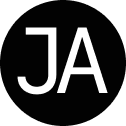How to Get a Job in Tech
My Story - 10/05/23

Overview
There are many reasons why people want to work in tech, building software. From the opportunity to create new products that can change the world to the chance to work with cutting-edge technology, there are numerous factors that make a career in tech appealing.
First, the tech industry offers an incredible opportunity to create something new. Building software can be a creative process, and there is nothing quite like the satisfaction of seeing something you have created come to life. Whether you are working on a new app or designing a website, building software allows you to use your imagination and come up with innovative solutions to complex problems.
The market has been a little turbulent over the past year, but the demand for skilled software developers, designers, and managers is high, and companies are willing to pay top dollar for talent. In addition, the tech industry is constantly evolving, and there is always room for growth and advancement within the field. This means that if you are ambitious and hardworking, there is the potential to climb the ‘career ladder’ relatively quickly and achieve great success.
Working from home has become increasingly popular, especially after the pandemic forced many companies to shift to remote work. For a lot of people, the flexibility of being able to work from home is a major draw of working in tech. It can allow for a better work-life balance, the ability to avoid a long commute, and a more comfortable and personalized work environment. Additionally, many tech jobs can be done remotely, which means that companies can hire talent from all over the world and offer more diverse and inclusive work environments. I personally love the flexibility, because I often solve problems better by stepping away and letting my mind wander, than sitting in my office staring at a Figma file.
The tech industry is also known for its fast-paced and dynamic environment. With new technologies and trends emerging all the time, there is never a dull moment. This can be incredibly exciting for people who thrive on change and are constantly seeking new challenges. Additionally, the collaborative nature of tech work means that you will be working with a smart and diverse group of people, from all over the world, with different skill sets and perspectives. Most of my team, which is called Sahit, is in the UK and I am located near Atlanta, Georgia. The 5-hour time difference does not cause issues if we make communication a priority and participate in our daily stand up meetings (DSU).
Finally, working in tech offers the opportunity to have a real impact on the world. Whether you are building software for a large corporation or a small startup, your work has the potential to change people's lives. From improving communication to streamlining business processes, software can make a real difference. For many people, this is a powerful motivator and a reason to get up and go to work every day. I currently design software features for dentists, orthodontists, and oral surgeons.
My story
Before I got into tech I was a music producer and audio engineer. I owned my own recording studio that I had built up over the previous 15 years, the business was successful and was voted ‘Best Recording Studio in Alpharetta’ 4 years in a row. This venture had offered me the opportunity to travel all over the world playing music with my clients, and I was able to buy high-end recording gear that most musicians drool over. But when the pandemic hit in 2020, I shut my business down for months, I was out of work, and my ex-wife and I had just separated. I had a lot of time on my hands and I didn’t want to waste it, I saw this as an opportunity to reinvent myself and add new skills to my repertoire and possibly try something new.
I was interested in building software because it seemed to share so many of the skills that I had acquired over the years. For example, I used Agile project management when working through the projects that I was producing, and I had designed the entire user experience for all of our services and customer touchpoints, including our eCommerce website. My brother, Daniel, is a developer and one of my friends, Dylan is a designer, so I had some good people to talk to about it. The year before, I got the book HTML & CSS by John Duckett with the intention of learning the ways that I could further customize the company website. After reading that, I continued by reading books on building digital products, design, management, negotiating, story telling, data analytics, and more. Inspired by Marty Cagen was the first book that I read on product. I read voraciously every morning and then started taking classes. Daily reading, studying, and always working on a class/certification, or project became a habit that is still with me to this day - I’m working on my fifth new certification this year!
I went through a front-end development program online with Treehouse. This program had about 40 different classes that taught me the basics of HTML, CSS, JavaScript, Bootstrap, web accessibility, performance optimization, and more. I started tinkering around with building websites and never quit. I know it’s nothing special, but I coded this website and I really enjoy maintaining it.
After I learned a little bit about coding, I started studying the management side of the software business. At the start of 2021 I got my CSPO certification, and took a 10 week Product Management Bootcamp at General Assembly. I started using design tools like Figma to wireframe product ideas. I had a few case studies from my classes as well as three tech-related certificates, and I started thinking about applying for jobs as a product owner, but did not feel like I was ready yet and I wasn’t sure if that was the path for me.
Georgia Tech had a 24 week UX/UI Boot camp. It’s an intensive program designed to teach participants the fundamental skills required to become proficient UX/UI designers. The program is intended for individuals who want to transition into a career in the tech industry or for those who want to upskill their design abilities. Students get the opportunity to work on many projects, including redesigning a non-profit website, a government website, and developing multiple mobile apps. I ended up getting accepted into this program, and by the end, I had completed a handful of projects that showcased my design skills. Check out my work here.
This was a big investment of time and money. Classes were 3 days per week and with all of the additional projects and reading, it was easily a full time job. I don’t know how some people with families and a full time job pulled it off. I was lucky enough to be in the position of owning my business, so I could throttle my work back as needed. I ended up working part time while I took this course.
During my time in this class, I got to know the instructor, Holly. The way she communicated was inspiring to me, I made sure to learn as much from her as I could by attending all of the office hours sessions before and after class. I came armed with deliverables that I wanted feedback on, too many questions, and I was always interested in what book she thought I should pick up next. Articulating Design Decisions by Tom Greever was a great recommendation. Holly became one of my mentors, and we still chat on a regular basis. She recently invited me to come and talk to the new cohort of UX/UI students in her class.
After I completed the UX/UI Boot camp, I coded this portfolio website that showcases the case studies from the projects that I worked on over the past year. That along with getting my resume and LinkedIn up-to-date took about 2 months. From there, I started applying to jobs and asking friends and connections who worked in tech for informational interviews so that I could network, learn their lingo, and get practice talking about my projects and journey. I set a goal to apply to 10 jobs per week, creating a bespoke resume and cover letter for each. Another goal was to have 3 informational interviews per week with people who worked jobs in my orbit. I knew that these were leading indicators, and the lagging indicator would be creating a connection that led to my first opportunity.
While attending a portfolio presentation workshop, I came across the opportunity to work as a UX/UI designer at Tech for Campaigns, designing Matt Kolezar’s reelection website. It was a good opportunity to exercise my design skills, work with a cross-functional team, and it was exciting because he won!
After applying to 70+ jobs over the course of 2 months, I had participated in interviews at a handful of companies, and I was happy to finally accept an offer to take on a job as a UX Designer at Carestream Dental, working on their dental practice management software, Sensei Cloud. I got the opportunity to interview because a former client of mine, Spencer, is a recruiter and saw my LinkedIn posts about my career transition goals. This is why it always pays to put yourself out there, if you stay quiet others won’t know how they can help you.
I’ve worked at Carestream Dental for over a year now and have taken a part in the design of a dozen features, some of them I was able to take all the way through the design process, from discovering the customer need and dreaming up the solution, to prototyping, testing, and working with my cross-functional team to deliver the code. While it was a challenge to learn a new craft and break into the industry, it has been quite rewarding and an amazing exercise for my mind. Some of the things that helped me the most have been constantly reading and taking classes, understanding the roles and motivations of the people that I work with, and focusing on clear communication.
Conclusion
The journey from music producer and audio engineer to a UX designer in the tech industry has been a transformative and fulfilling one. It all started with the desire to explore new horizons and add valuable skills to my repertoire, and it has led to a career that I'm passionate about. My own journey involved a significant investment of time and effort, from coding classes to product management and, finally, UX/UI design. The support of mentors and the power of networking played pivotal roles in my transition. It's a testament to the importance of continuously learning, understanding the nuances of your field, and effectively communicating.
As I reflect on my journey, I'm reminded that opportunities often arise when we do the work and put ourselves out there. Creating a body of portfolio work, applying for a lot of jobs, engaging in informational interviews, and sharing my career transition goals on platforms like LinkedIn eventually led me to my current role as a UX Designer.
So, for anyone considering a career switch or embarking on a journey into the tech industry, remember that the road may be challenging, but the destination is worth every effort. With dedication, a thirst for knowledge, and the willingness to connect with others, you can pave your own path to success in tech. It's a world of endless possibilities, and your story is waiting to be written!
